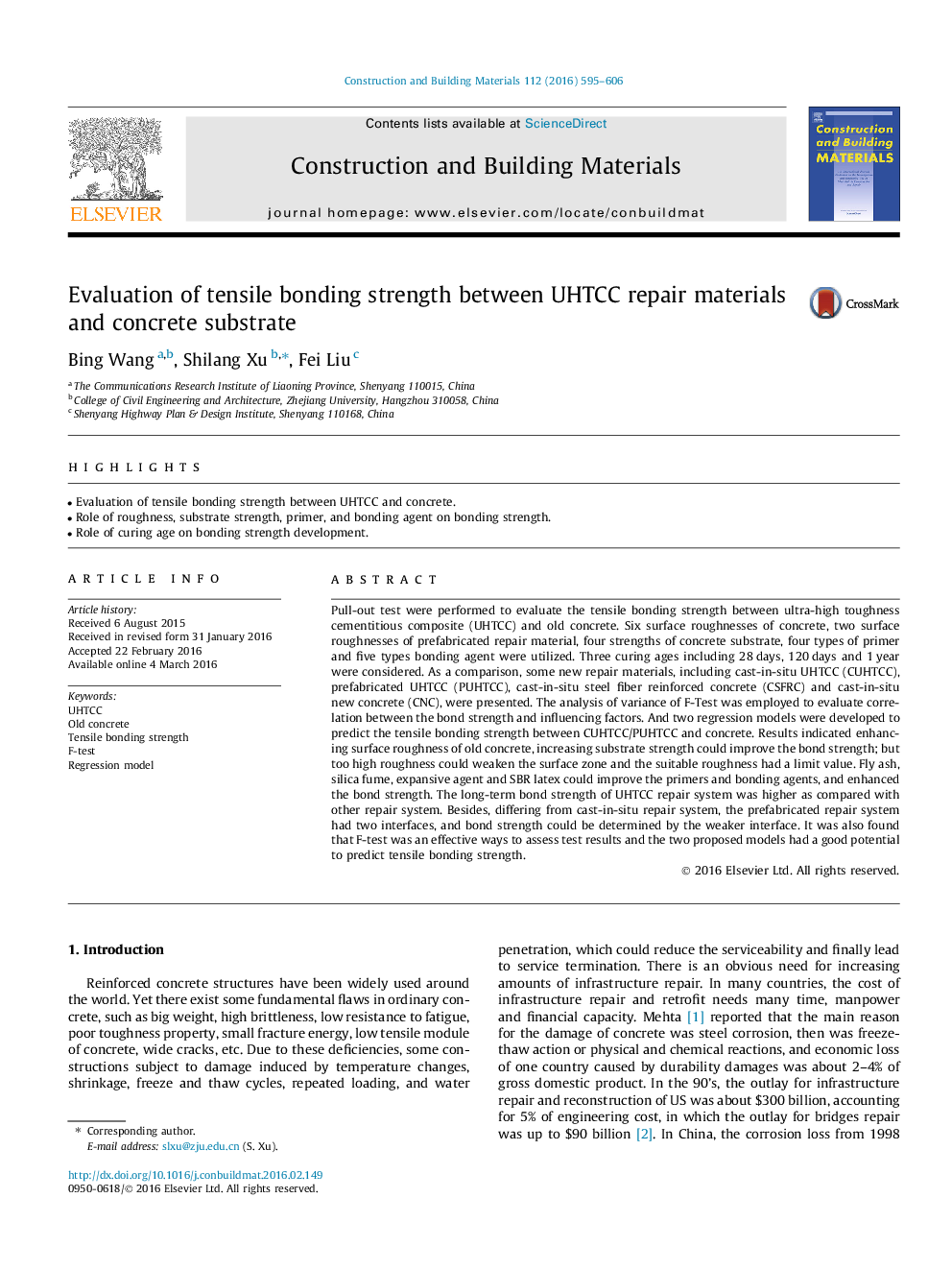| کد مقاله | کد نشریه | سال انتشار | مقاله انگلیسی | نسخه تمام متن |
|---|---|---|---|---|
| 6719229 | 503537 | 2016 | 12 صفحه PDF | دانلود رایگان |
عنوان انگلیسی مقاله ISI
Evaluation of tensile bonding strength between UHTCC repair materials and concrete substrate
دانلود مقاله + سفارش ترجمه
دانلود مقاله ISI انگلیسی
رایگان برای ایرانیان
کلمات کلیدی
موضوعات مرتبط
مهندسی و علوم پایه
سایر رشته های مهندسی
مهندسی عمران و سازه
پیش نمایش صفحه اول مقاله

چکیده انگلیسی
Pull-out test were performed to evaluate the tensile bonding strength between ultra-high toughness cementitious composite (UHTCC) and old concrete. Six surface roughnesses of concrete, two surface roughnesses of prefabricated repair material, four strengths of concrete substrate, four types of primer and five types bonding agent were utilized. Three curing ages including 28Â days, 120Â days and 1Â year were considered. As a comparison, some new repair materials, including cast-in-situ UHTCC (CUHTCC), prefabricated UHTCC (PUHTCC), cast-in-situ steel fiber reinforced concrete (CSFRC) and cast-in-situ new concrete (CNC), were presented. The analysis of variance of F-Test was employed to evaluate correlation between the bond strength and influencing factors. And two regression models were developed to predict the tensile bonding strength between CUHTCC/PUHTCC and concrete. Results indicated enhancing surface roughness of old concrete, increasing substrate strength could improve the bond strength; but too high roughness could weaken the surface zone and the suitable roughness had a limit value. Fly ash, silica fume, expansive agent and SBR latex could improve the primers and bonding agents, and enhanced the bond strength. The long-term bond strength of UHTCC repair system was higher as compared with other repair system. Besides, differing from cast-in-situ repair system, the prefabricated repair system had two interfaces, and bond strength could be determined by the weaker interface. It was also found that F-test was an effective ways to assess test results and the two proposed models had a good potential to predict tensile bonding strength.
ناشر
Database: Elsevier - ScienceDirect (ساینس دایرکت)
Journal: Construction and Building Materials - Volume 112, 1 June 2016, Pages 595-606
Journal: Construction and Building Materials - Volume 112, 1 June 2016, Pages 595-606
نویسندگان
Bing Wang, Shilang Xu, Fei Liu,